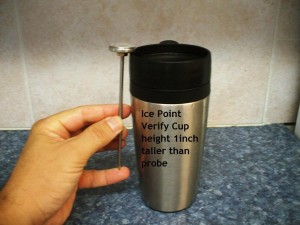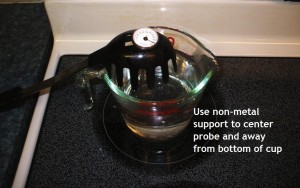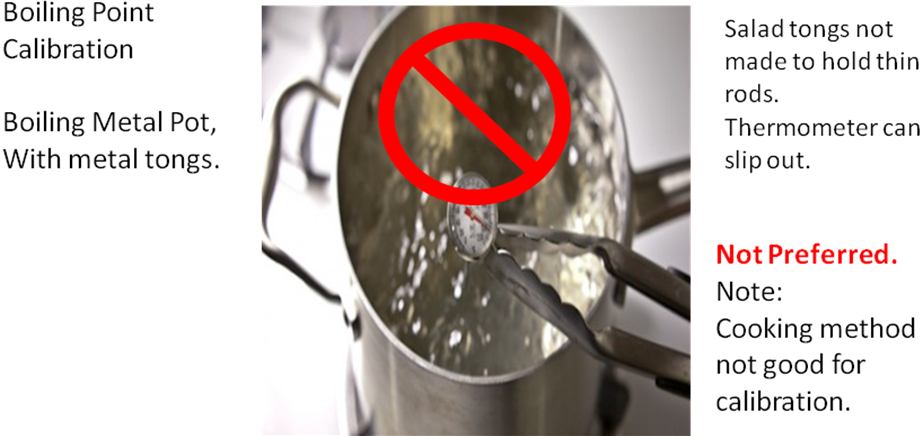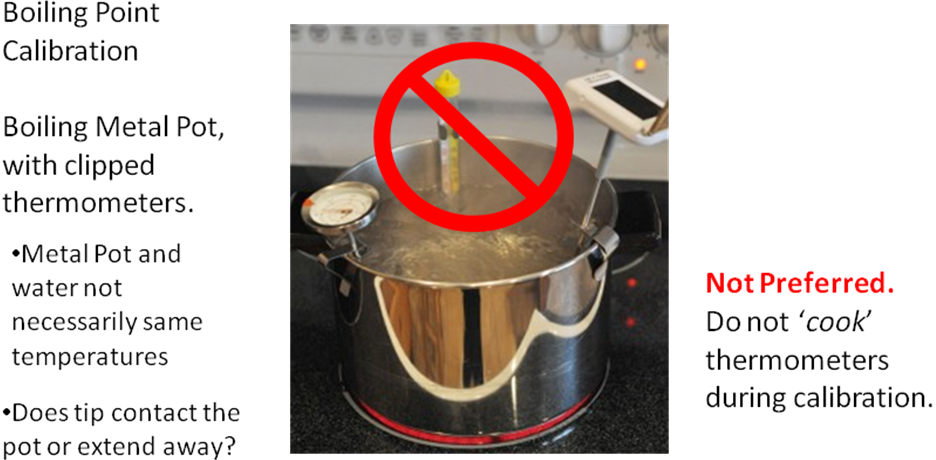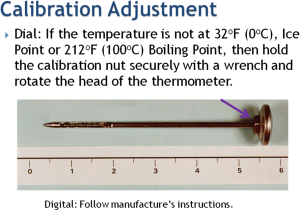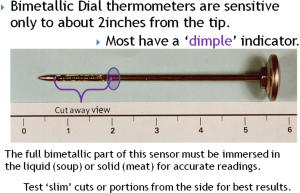Thermometers should be calibrated whenever they are dropped, before first use and during temperature extremes.
Temperature is a critical measurement for ensuring the safety and quality of many food products. Thermometer Calibration is essential from receiving, throughout production, final storage and distribution. The HACCP validation, verification reassessment section in Code of Federal Regulations (9CFR 3:417.4) specifies that instruments used for monitoring critical control points must be calibrated. Keep a thermometer calibration log.
Often, routine simple procedures ‘devolve’ into short cuts or bad habits that reduce the effectiveness or validity of the original protocol. This happens when original knowledge/understanding falls into blind protocols. The following discussion provides tips of good practice and reminders of why those tips were developed.
Quality is Consistency:
We realize that in a laboratory environment, thermometer clamps and posts are used as well as stirring hot plates. Many production facilities however will not ‘bother’ with this and will often make due. This is where an understanding of the process is just as important as keeping the process consistent. The tips provided use common ‘kitchen items’ that are found in all facilities.
Protocols and Tips
A. Ice Point Method
- Fill a tall insulated cup with 1/2 crushed ice and 1/2 water.
- After 5minutes, insert the thermometer at-center and off-bottom. Slosh for good mixing.
- If reading is not 32°F +/- 2°F, then adjust thermometer. The ice point method permits calibration to within 0.1°F.
- Tip: use crushed ice and thermos instead of Styrofoam
Reason: It becomes a matter of consistency. Insulated cups are preferred when testing multiple thermometers over several hours of the day as the ice keeps longer. If your procedure says –go find a styro-cup-, you are tempted to grab your soda cup for the test and probably use the left over ice. But, if you have a fixed set of equipment set aside for the task, everyone is doing the same thing.
Reason: Crushed ice provides more surface area and improves thermal mixing near the thermometer tip when sloshed. Keeping the tip centered in the cup develops good habits that ‘need’ to be carried on in the boiling point method.
B. Boiling Point Method
- Pour distilled water into a Pyrex® container; heat to boiling.
- Then insert thermometer in center, 1-inch away from sides or bottom minimum.
- If reading is not 212°F +/- 2°F, adjust thermometer. Ice point method permits calibration to within 1.0°F.
- Tip: Support with non-metallic holder: pasta scoop vs. clips to maximize distance from sides.
Reason: While boiling water in a metal pot or Pyrex® cup will always read 212oF, (upto1,000ft elevation) making contact with the sides can influence some thermometers. A metal pot exterior will reach much higher temperature as it is ‘in the flame’. A quick measurement of a metal pot exterior will show a thermal stratus: Above Water level: >130F; in water level 212F-217F; bottom 1-inch of pot exterior >170F. Being ‘off’ a few degrees at this point can have serious consequences.
(A Free copy of training a presentation is available.)
TIP: Review basic SOP’s with new and old employees. Simple errors can cause
major issues.
How a Bimetallic Dial Thermometer Works:
And that’s your Nuggitz™ for today!

